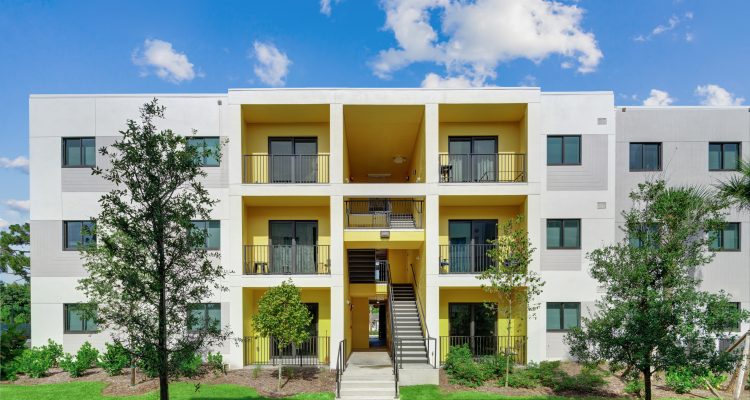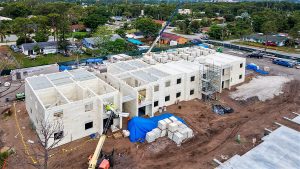However, the biggest advantage of this system is ease of assembly. “There’s no carpenters, no rod setters, no masons,” Smuts says. “We use unskilled laborers who get trained quickly to put these buildings together.”
Plans are color-coded so that construction workers know exactly where to place each component. For the construction industry, where shortages for skilled labor make it virtually impossible for housing supply to keep up with demand, this simplicity represents a significant change.
Because the materials are part of the building code there are fewer required inspections, which further speeds up the process. “We have a sill plate that gets bolted to the concrete foundation, so there’s an inspection there,” Smuts says. “Once that’s done, you can go as high as you want because you already have the compressive strength. You’re not waiting for anything to cure. You’re not waiting for subcontractors to do their rough-in or to get out of the way.” Once assembled, the MCFR materials can be finished or renovated like any other conventional building system.
The three-story buildings in the demonstration project, designed by Arquitectonica with structural engineering support from DeSimone, have been well received. The first two buildings were fully occupied by September, while the final buildings welcomed occupants in October. “People love it,” Smuts says.
RENCO’s building system is currently approved for structures up to five stories. The company is pursuing expanded approvals for taller structures and completing seismic testing for additional earthquake zones. Moreover, the company has secured financing to establish a manufacturing facility in Jupiter, Fla. Currently, all materials are manufactured in Turkey and shipped to the United States. By the first quarter of 2024, the U.S. facility will be up and running and begin work to meet its goal of building 6,000 apartments and single-family homes per year.
Megan Headley is a freelance writer in Fredericksburg, Va. She can be reached at megan@clearstorypublications.com.
Each of the four buildings were constructed in approximately eight weeks using the interlocking building system.
Photo Credit: RENCO USA Inc.



